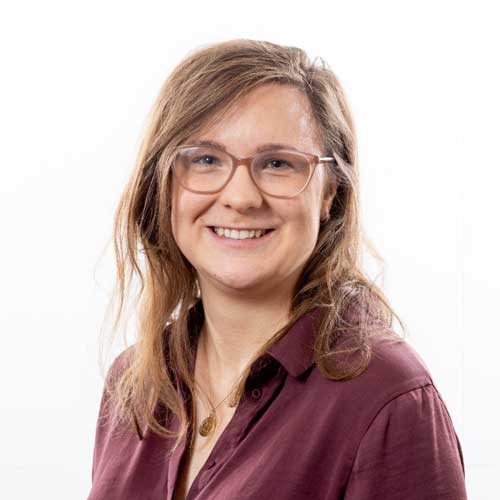Meet Renée, Structural Engineer Data Centres

Data centres are a complex puzzle and in order to solve the puzzle you must coordinate a lot with the other disciplines.
Solving a complex puzzle
Most of the projects Renée is working on, are in de data centre market. What is it that makes data centres challenging to work on? “Usually, structural engineering is one of the most important disciplines when it comes to designing a building. However, when it comes to data centres, other disciplines like mechanical and electrical engineering are so important, that you must make room for all those installations. This makes a data centre a more complex puzzle and in order to solve the puzzle you must coordinate a lot with the other disciplines. And luckily, we have all those disciplines in-house.”
The above means you always work within multidisciplinary teams who are cross borders, working on data centres all over the world. “What I like about working in those multidisciplinary teams, it that you can actually see what the other disciplines are doing and that it is all put together in one integrated model. This makes it really tangible and makes you look beyond your own field of expertise. Because we do projects in various countries, you have to deal with all kinds of local customs and regulations. In Switzerland, for example, they mainly work with in-situ concrete, while in the Netherlands we often use prefab.”
Not only data centre projects
Despite data centres being a big part of Renée’s job, she is also working on other projects. “That I sometimes work on other types of projects in addition to data centres, keeps the work fun. When I work on a data centre, I spend a lot of time on the big picture and less on the detail engineering. So which elements should be placed where and how thick should they be to support the specified load? But when I work on for example a wind turbine or are doing a check calculation, then I dive way more into details. For me, that’s the perfect mix.”A lot of peers
In a project you almost always work with several colleagues from your discipline. Sometimes it's a lead engineer, a modeler and you, but sometimes there will be several engineers and modellers. Depending on the size of the project. “The team of structural engineers I'm in consists of about 35 people. This means that those I work with change every project. This keeps it varied.”But Renée’s team is not the only team of structural engineers within our company. “Recently we had an event with all structural engineers within the company that are based in the Netherlands, and I have never seen so many structural engineers together. There were several workshops on subjects as sustainability and parametric design, as well as presentations of project cases. On such a day you hear what else is going on within the company, aside from what you are working on yourself.”
Using automation to work more efficient
In addition to projects, you get the room to develop yourself and keep on learning. Renée is part of the hackathon team, where she gets the chance to apply the programming skills she has acquired during her studies. “I like to get hands-on with new tools and programming skills to develop effective structural models and connect calculations with drawing tools. Within the Hackathon team I get the chance to do that. By using Python and Grasshopper we automate repetitive tasks, so we can get our jobs done in a more efficient way. We also try to make the transitions from one software to another smoother. By doing this you can for example create a model in SCIA, upload it to the server and then download it into Revit. This avoids having to manually redraw the model in the next software.”As sustainable as possible
We do not only care about efficiency in our projects, but also about designing data centres that are as sustainable as possible. “Sustainability is a difficult subject in structural engineering, because you need a certain amount of material to ensure that a building remains standing. Of course, we look at how we can deal with materials as sustainably as possible. You, for example, start with a column of 50 by 50 centimetres, but once we know what all has to fit into it, we check if everything would maybe fit in a column of 40 by 40. Or maybe you can use C20/25 concrete instead of C30/37, which creates fewer emissions in the production process. We always actively think about how we can make the design as sustainable as possible.”Do you want to work on challenging projects?
Then our global data centre competence team is the place to be.
